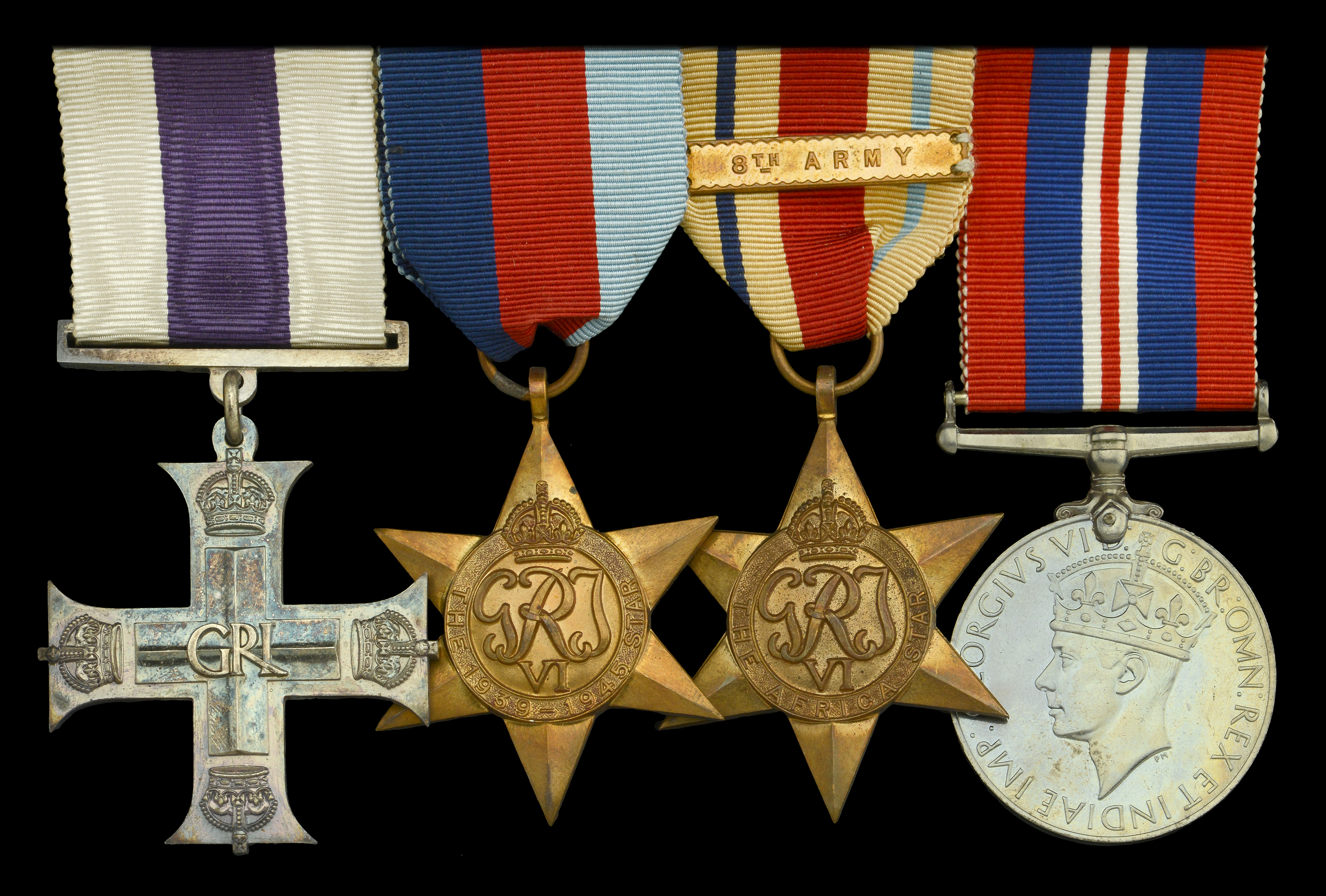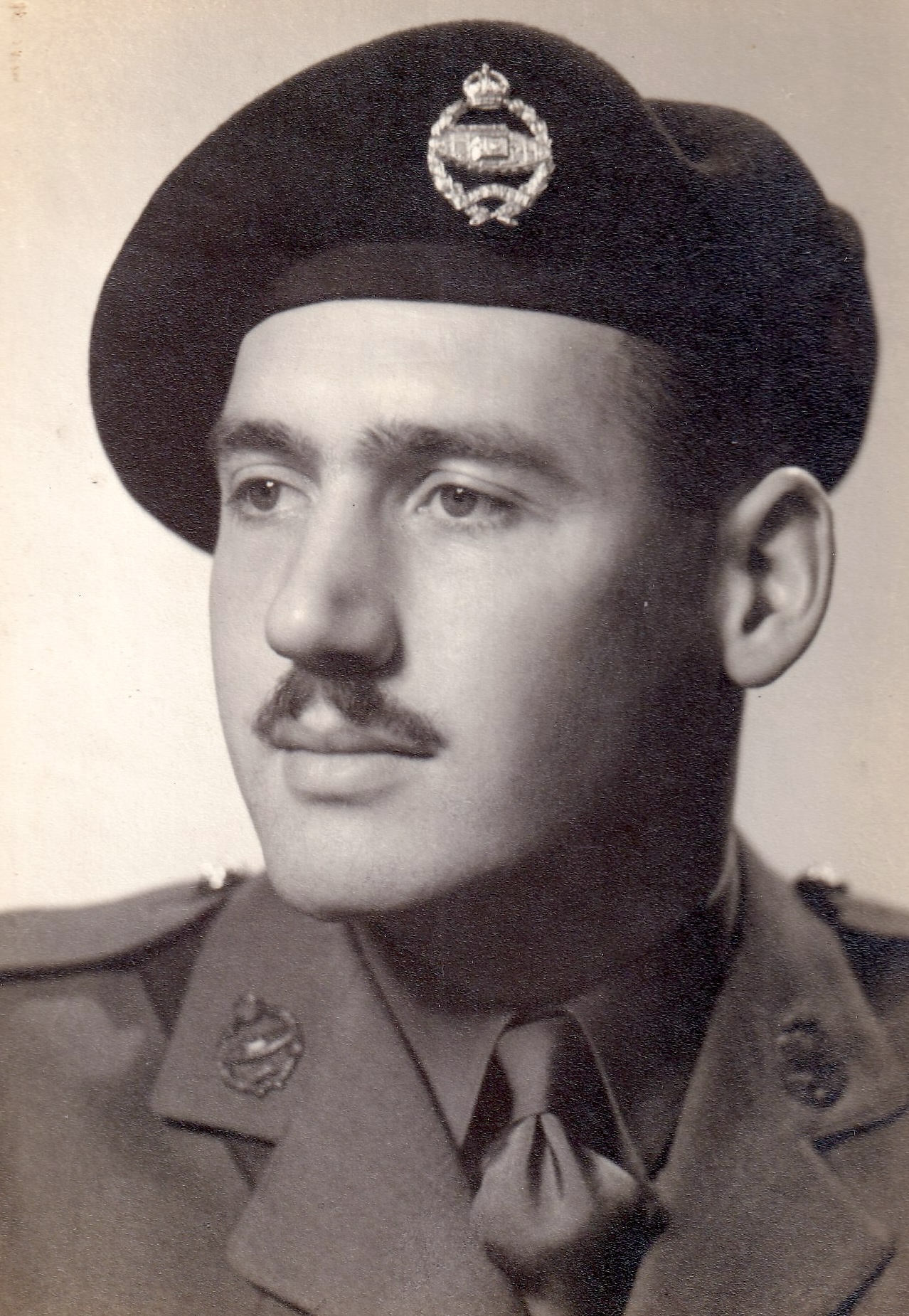A Second War ‘Battle of Alamein’ M.C. group of four attributed to Lieutenant A. T. Almond, 46th (The Liverpool Welsh) Battalion, Royal Tank Regiment, who was killed in action on 28 October 1942 Military Cross, G.VI.R. reverse officially dated 1942, with Royal Mint case of issue; 1939-45 Star; Africa Star, 1 clasp, 8th Army; War Medal 1939-45; together with the named Army Council enclosure, extremely fine (4) £1,000-£1,400 --- M.C. London Gazette 5 November 1942: ‘In recognition of gallant and distinguished services in the Middle East.’ The original Recommendation, for an Immediate M.C., states: ‘During the Battle of Alamein, at about 0900 hrs on 4 September 1942, Second Lieutenant Almond’s troop was ordered forward on to an exposed position subject to a lot of enemy artillery fire. Second Lieutenant Almond’s tank receives a direct hit from a large calibre gun. The tank, which was moving at about 10 m.p.h., caught fire and ammunition exploded. Second Lieutenant Almond and his gunner climbed out on to the turret of the tank but did not leave the rank until they had extricated the driver. Second Lieutenant Almond, although ordered to evacuate his crew, returned on another tank and managed to put out the fire sufficiently to get into the driver’s seat. He then started the engine and, although burnt himself, managed to tow out another tank which had been hit. He then drove his tank back, collected his crew, and returned into action after getting the tank into fighting trim. In spite of his burns and a temporarily blinded eye, he remained in action for another 10 hors under almost continuous shell fire. The determination, bravery, and coolness under fire which this officer showed proved a fine example to the remainder of his troop and the fact that they remained in their position materially assisted the success of the action on this front.’ Arthur Thomas Almond was commissioned Second Lieutenant in the Royal Rank Regiment from 102nd O.C.T.U. on 28 December 1940, and served with the 46th (The Liverpool Welsh) Battalion during the Second World War in North Africa, using Valentine tanks. Awarded the Military Cross for his gallantry during the Battle of Alamein, he was killed in action on 28 October 1942, on which date the Battalion was in support of the 26th Australian Brigade. ‘Valentine in North Africa’ gives the following account: ‘El Alamein, 46th RTR by now were also working with the Australians, and during the main Australian thrust on the night of October 28/29 were to attack with 2/23rd Battalion and secure the road. Unfortunately, things began to go wrong from the start. The final briefing was held very late, and Colonel Clarke returned without sufficient time to give his Squadron Leaders anything more than the barest details. The attack was to get under way almost immediately, and would be delivered from a start-line which had been chosen from the map, and which had not been reconnoitred. Some of the infantry would ride on the tanks, and others in carriers. The start-line was in fact, in the middle of a minefield, and on the way to it the regiments were subjected to heavy fire which caused the infantry to drop off. Several tanks missed the minefield gaps and became casualties. The situation became extremely confused, and the enemy fire rose to a crescendo. In the light of three or four burning Valentines the anti-tank gunners were able to pick off their victims from three sides at ranges up to 1,000 yards. The attack broke down into un-coordinated assaults which took a heavy toll of both tanks and infantry. Colonel Clarke and his Intelligence Officer were badly wounded by a mortar shell, and the Regiment was taken over by Major Offord. After a night of savage fighting, Colonel Evans of 2/23rd finally ordered his battalion to dig in at 04.00, 1,000 yards in advance of the original start line, The 2/23rd had lost 29 killed, 172 wounded and 6 missing. The 46th RTR had lost all but eight of their tanks and had a high percentage of their crews killed or wounded, including all the Squadron Commanders. The casualties sustained by the 46th and 2/23rd Battalion had not been in vain. After the battle, Rommel recorded that the British tanks and infantry had succeeded in blowing a gap in his line, cutting off the 2nd Bn 125 Panzer Grenadier Regiment and a Battalion of XIth Bansagliari, who remained in Thompson’s Post, almost surrounded by their assailants, resisting all attempts to dislodge them with a ferocious determination. In addition, the 125th Regiment’s 3rd Battalion had virtually ceased to exist by next morning, the battle having raged with tremendous fury for six hours.’ Almond is buried in El Alamein War Cemetery, Egypt. Sold with a fine portrait photograph of the recipient; rank pips; Royal Tank Regiment cap badge; a miniature M.C., a leather bound Bible, the inside inscribed ‘A. T. Almond, R.T.R.’; and a copy of ‘The White Company’, by Sir Arthur Conan Doyle, with Bishop’s Stortford College Prize label affixed on the inside front cover, inscribed ‘Summer Term 1927, Form IA. Prize awarded to A. T. Almond’.









